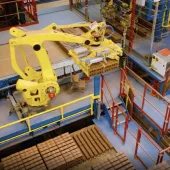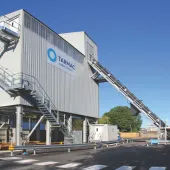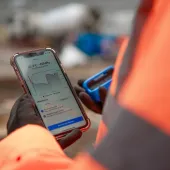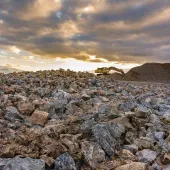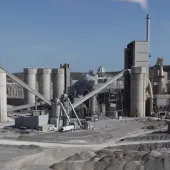Tarmac and Open Energi in smart energy partnership

Companies join forces to harness flexible energy demand and deliver new capacity to the National Grid
DEMAND-side response (DSR) company Open Energi have announced a landmark partnership agreement with Tarmac that will see them harness flexible energy demand from Tarmac’s equipment which will be aggregated to unlock new flexible capacity on the National Grid.
Open Energi’s Dynamic Demand technology allows consumers (the ‘demand side’) to change how and when they use electricity to free up capacity for the overall grid. It does this by freeing up electricity that can be used to balance spikes in demand, avoiding the need to rely on additional power stations that would normally swing into action during peak times.
Open Energi are working with Tarmac to install Dynamic Demand on more than 200 bitumen tanks at 70 asphalt plants across the UK, helping to build a smarter, more responsive system which supports renewables and the wider UK transition to a zero-carbon economy.
The technology automatically and invisibly adjusts the power consumption of these bitumen tanks to help manage fluctuations in electricity supply and demand.
Dynamic Demand is particularly suitable for use with stored-energy devices such as bitumen tanks, because although they need energy, as long as they operate between expected temperature limits, it does not matter precisely when that energy is used.
Ged Holmes, commercial director at Open Energi, said: ‘DSR is playing an important role in building a smarter, more sustainable electricity network. The collaboration with Tarmac is a significant milestone for Open Energi, supporting National Grid to balance supply and demand on the grid.’
The roll-out commenced at the start of 2015 and, to date, Open Energi’s Dynamic Demand technology has been installed at more than 50 of Tarmac’s sites, with the remaining 20 expected to be live in early 2016.
Dr Martyn Kenny (pictured), sustainability director at Tarmac, commented: ‘Our construction solutions are used across the UK to create the infrastructure around us. As such, we recognize the importance of contributing to its overall sustainability, by ensuring we optimize the whole-life performance and by growing and managing our business in a sustainable way.
‘DSR technology helps us do just that. By managing our energy demand more smartly, we are supporting the delivery of the UK’s carbon-reduction targets.’
Throughout the year, the grid experiences a series of spikes in power demand as millions across Britain tune in to watch their favourite soap or sporting event, and put the kettle on during advert breaks. A rapid response to these spikes is critical to ensure the grid is balanced and the lights do not go out. The integration of more renewables on to the network also means that more fluctuations in generation are likely to occur.
National Grid have identified DSR as a key solution for managing these fluctuations and future-proofing the UK’s electricity grid, announcing plans earlier this year to invest up to £400 million a year to meet 30–50% of grid-balancing requirements from the demand side by 2020, via their Power Responsive campaign.


